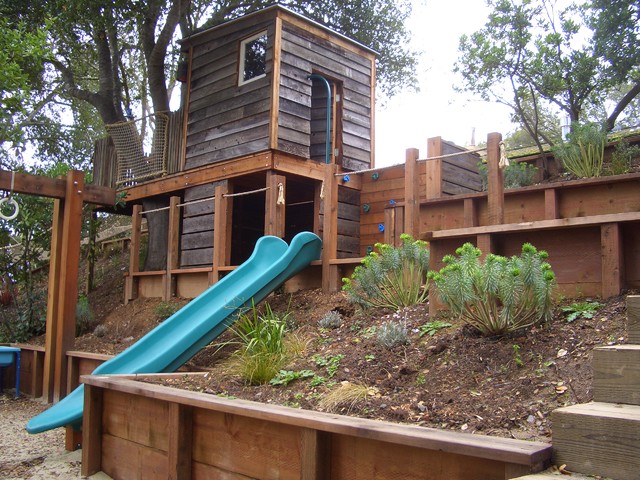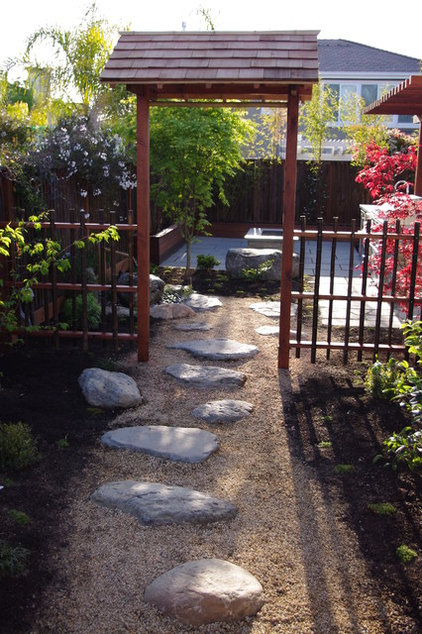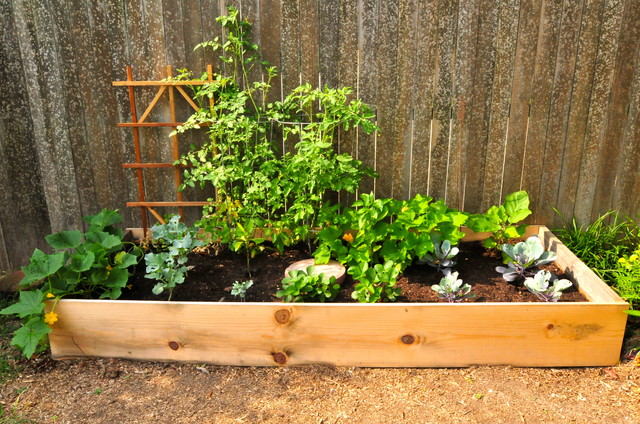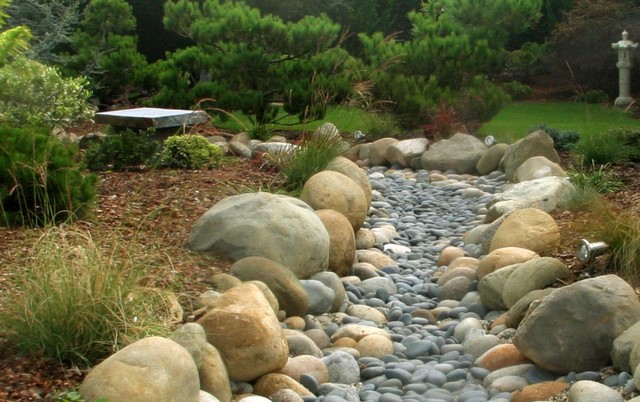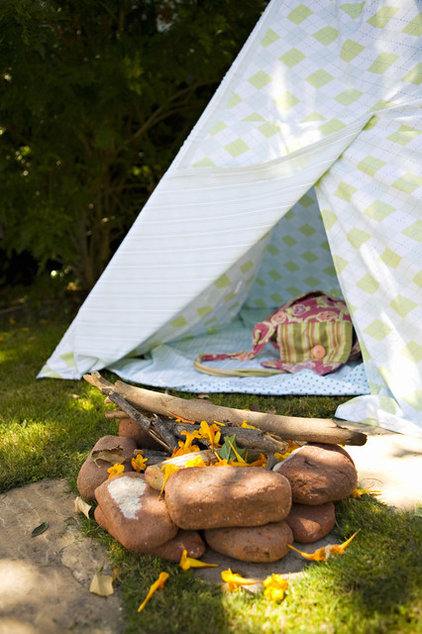8 Outdoor Playspace Ideas to Nurture Kids' Imaginations
Exploring an ever-changing environment and having their capabilities challenged in natural settings helps children ages 3 to 8 grow physically and emotionally. This kind of play also expends energy and encourages imagination.
Natural play elements are attractive, easy and often more inexpensive than prefab superstructures. Plus, you don’t need a megayard — just a little imagination. Consider implementing just one or two of these play-boosting concepts in your yard this season.
|
1. Create multilevel play. Topography
challenges attract kids. Multilevel environments can be magical and
attractive places where children can let their imaginations run free. Build traditional elements, such as slides or tubes, into natural topography, or build up the soil to create hills and valleys.
2. Let kids take a risk. Children test and repeat skills until they have mastered them, beginning at an early age. Parents and teachers naturally often try to limit injuries by making environments safe — but sometimes spaces end up being too safe, minimizing healthy challenges along with risk. Many researchers believe that adults should not stand in the way of children’s “risky” play and complex challenges. A child’s ability to understand and manage risk is essential to development, and naturalized environments can be adjusted to suit the child. Consider introducing climbing walls, hills or trees into a playscape. |
|
4. Go wild! Childhood play
can range from the active and boisterous to the quiet and
contemplative. Wild grasses and flowers help create a fantasy-like
environment to support creative minds, whether the kids are playing
hide-and-go-seek, looking for bugs or just finding shapes in the clouds.
If you have limited space or can't make major changes to your
landscape, use potted plants. Mix and match plant sizes and colors to
create interesting textures and shapes.
5. Let there be life. Children who nurture plants, flowers, fruits and vegetables can experience the benefits of caring from seedling to mature specimen. They also develop a sense of responsibility, self-maturity and pride over the environment they helped to create. Additionally, they tend to choose healthier foods to eat — such as the fruits and vegetables they grow themselves! An easy project no matter what space you have is planter beds. They can be the focal point of a yard or relegated to the perimeters. See how to build a raised garden bed |
|
by Urban Oasis
»
|
|
6. Let them learn through the senses. Successful
playscapes allow children to explore the environment with all five
senses. Sounds of water splashing, mud slurping, bees buzzing and birds
chirping aren't only enticing, but they inspire curiosity. This dry
creek is a great and safe place for playing children. Just add a
trickle of water from a hose to encourage experimentation or mud making.
If a dry creek isn't in the cards, use a large planter pot or fountain
with elements like rocks, water and mud.
|
8. Nurture art through play. Art isn’t only for paper; your landscape can provide a canvas or materials too. Creating art requires children to engage in self-evaluation and decision making, from choosing the elements to arranging them. And even just the act of creating art — painting, drawing, cutting, sculpting — helps children develop coordination, strength and fine motor dexterity.
Engage your child's inner artist outdoors by painting pots, making mosaic pavers and creating artwork from fallen leaves. The possibilities are limitless!
